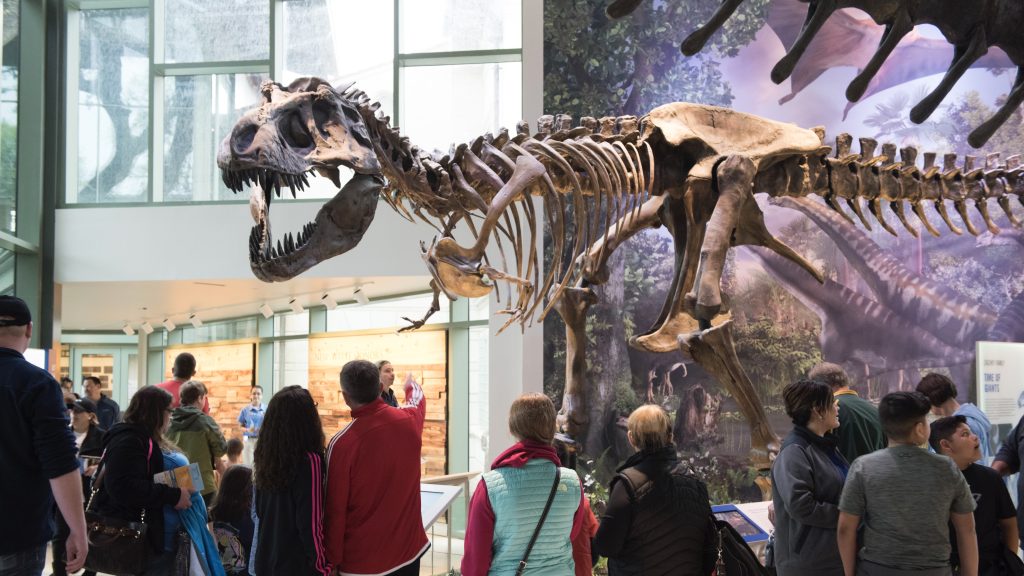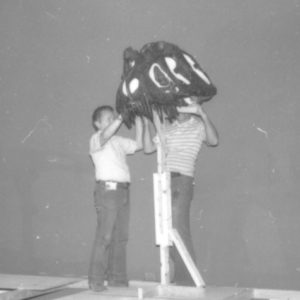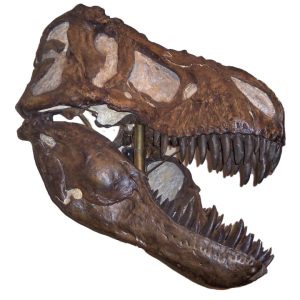
Get to Know AMNH 5027
By Thomas Adams, PhD, Chief Curator and Vice President
This summer the Witte Museum will become a destination for dinosaur lovers across the country as it hosts the blockbuster exhibitions Tyrannosaurs: Meet the Family, from the Australian Museum (this exhibition has closed), and Antarctic Dinosaurs, from Chicago’s Field Museum (this exhibition has closed). Regular visitors know that the Witte also has a beautiful permanent dinosaur gallery, with a fabulous T. rex.
The name Tyrannosaurus rex, or “king of the tyrant lizards,” was coined in 1905 by Henry Fairfield Osborn, president of the American Museum of Natural History (ANMH) at the time. It was based on a partial skeleton discovered in Montana in 1902 by famous fossil hunter Barnum Brown. Brown and the American Museum would go on to discover a total of five T. rex specimens. These would be the only T. rex fossils known anywhere until the 1960s.
In the Naylor Family Dinosaur Gallery at the Witte, T. rex represents the last days of the dinosaurs before the Chicxulub asteroid would wipe out these giants from the face of the Earth. As with all the dinosaur skeletons mounted in the gallery, it is a replica of fossil animals that once lived in what we now call Texas. The Texas fossil record for T. rex is represented by just a handful of isolated bones and teeth but provides enough evidence to show that it once roamed West Texas during the Late Cretaceous. The Witte’s particular skeleton cast is a replica of the T. rex (AMNH 5027) on display at the American Museum of Natural History in New York.

AMNH 5027 was the third specimen of T. rex to be discovered by Barnum Brown in Montana in 1908. At the time of its discovery, the shape of the skull for Tyrannosaurus rex was unknown, so it was this new specimen that provided the first complete skull of T. rex along with large portions of the skeleton. It was also the first T. rex to be exhibited to the public and was mounted in an upright, rearing pose as the central attraction of the AMNH’s dinosaur hall. As a result, it would be the dinosaur that would become known and loved by generations. In fact, it is this historic mount that was used as the iconic symbol for the Jurassic Park film series.
By the 1980s it was recognized that a rearing pose was incorrect, and the skeleton was re-mounted in a more accurate, horizontal pose during a renovation of the museum’s dinosaur halls in the early 1990s. The mount AMNH 5027 can still be seen on display on the fourth floor of the American Museum.
AMNH 5027 has had a long history with the Witte. A skull cast of the iconic dinosaur was displayed in the museum’s former dinosaur exhibits for many years. Some of you may remember the large skull mounted high on the wall with the skeleton illustrated behind it. Today, we can admire this full size mount of Tyrannosaurus rex on display in the Naylor Family Dinosaur Gallery and imagine a time when one of the largest predators to ever live once called Texas home.
Witte Museum Members Magazine | Spring 2023
